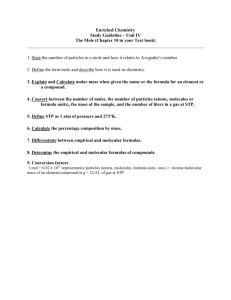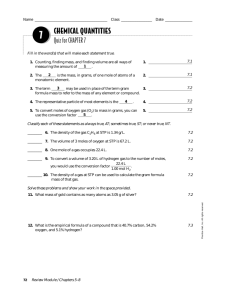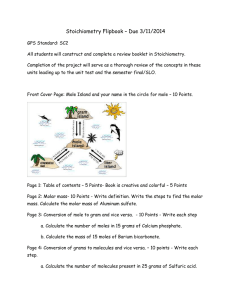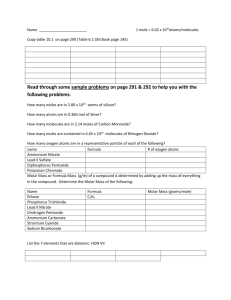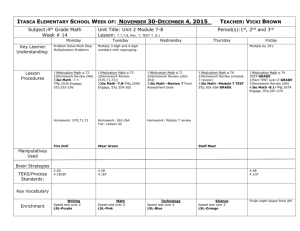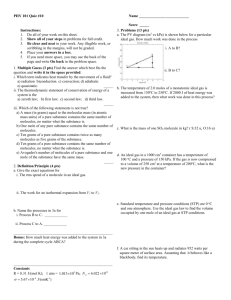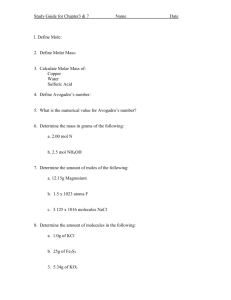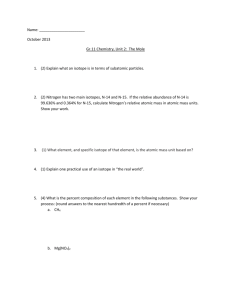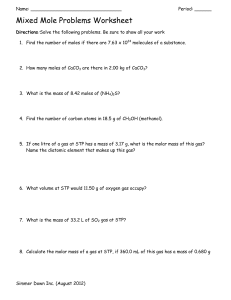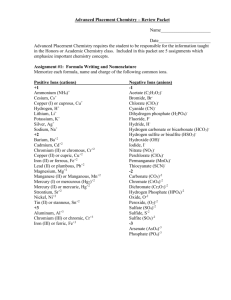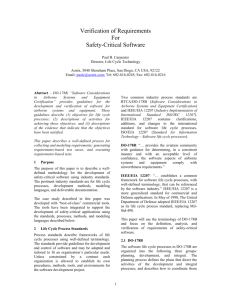Chapter 10 Review: Chemical Quantities & Calculations
advertisement
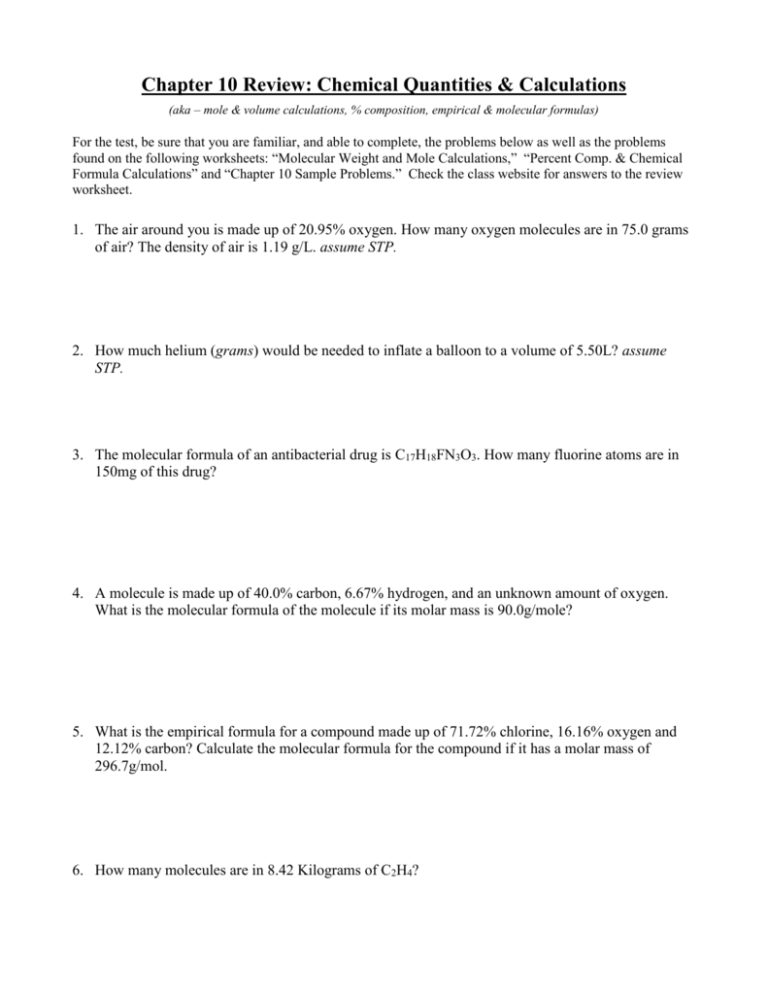
Chapter 10 Review: Chemical Quantities & Calculations (aka – mole & volume calculations, % composition, empirical & molecular formulas) For the test, be sure that you are familiar, and able to complete, the problems below as well as the problems found on the following worksheets: “Molecular Weight and Mole Calculations,” “Percent Comp. & Chemical Formula Calculations” and “Chapter 10 Sample Problems.” Check the class website for answers to the review worksheet. 1. The air around you is made up of 20.95% oxygen. How many oxygen molecules are in 75.0 grams of air? The density of air is 1.19 g/L. assume STP. 2. How much helium (grams) would be needed to inflate a balloon to a volume of 5.50L? assume STP. 3. The molecular formula of an antibacterial drug is C17H18FN3O3. How many fluorine atoms are in 150mg of this drug? 4. A molecule is made up of 40.0% carbon, 6.67% hydrogen, and an unknown amount of oxygen. What is the molecular formula of the molecule if its molar mass is 90.0g/mole? 5. What is the empirical formula for a compound made up of 71.72% chlorine, 16.16% oxygen and 12.12% carbon? Calculate the molecular formula for the compound if it has a molar mass of 296.7g/mol. 6. How many molecules are in 8.42 Kilograms of C2H4? 7. How many molecules are in a 6.99g sample of oxygen gas (O2)? assume STP. 8. A sample of xenon gas contains 11.22 x 1051 atoms. What is the mass of the sample (grams)? What is the volume of the sample (liters)? assume STP. 9. Calculate the volume of 5.0 moles of CO2. assume STP. 10. What is the mass of 32.00 x 1032 molecules of argon gas? assume STP. 11. An unknown has a density of 2.21g/L, calculate its molar mass. 12. What is the percent composition of a sample containing 1.03g of nitrogen and 5.29 g of oxygen? 13. Calculate the percent composition of Fe2O3, and calculate how much iron is in 99.99 grams of ferric oxide. 14. A sample contains 6.75% helium. How many atoms of helium are in 45.8 x 1010 kiloliters of this sample? assume STP.
